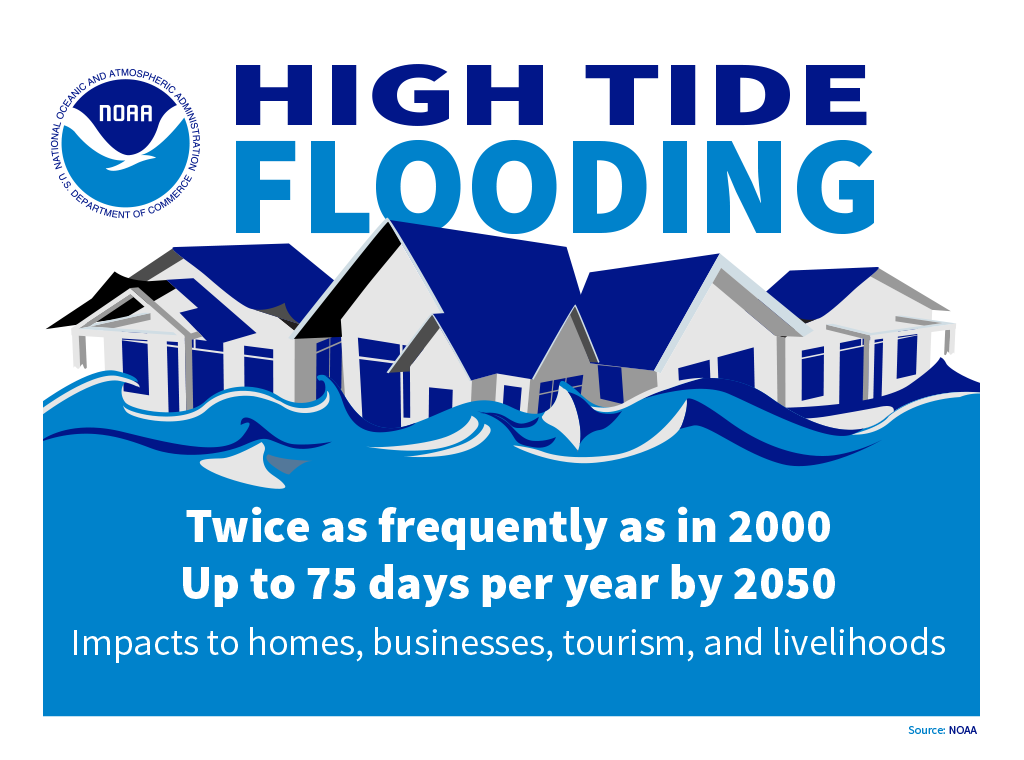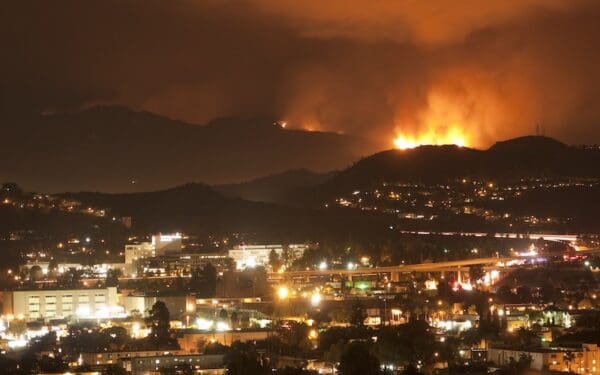
High tide flooding can inundate roadways and other infrastructure, putting people at risk. Photo: NorthEndWaterfront.com via CC BY-NC 2.0
As I write this, the Boston area – and much of the rest of New England – remains in a state of drought. Meanwhile, the worst heat wave of the year is scorching Californians. Other parts of the country – and the world – have witnessed the opposite weather extreme. Record-breaking, deadly floods have devastated Kentucky, Texas, and now Pakistan.
While such disasters rightly grab headlines, they are not necessarily the biggest risk we face from climate change. Flooding isn’t always caused by big storms. Sometimes, it’s as simple as the changing tides. “High tide” flooding – also known as “sunny day” or “nuisance” flooding – has grown more frequent around the world as rising seas and other factors have pushed water levels above the usual high tide mark. That means high tide flooding can occur even on a beautiful, sunny day. As sea levels continue to rise, this phenomenon is accelerating.
In fact, high tide flooding is twice as frequent in U.S. coastal communities as it was 20 years ago. A new report from NOAA projects that by 2050, east coast and Gulf state communities could see a 150% increase in high tide flooding compared to the year 2000.
The data is clear: We must prepare our coastal communities for the increasing frequency and damage associated with high tide flooding. Here’s how.
Combatting Sunny Day Flooding
In Boston, high tide flooding has accelerated by more than triple the national average. The city – built partly on filled land over the centuries – has registered more high tide flooding than any other city in the country. By 2050, Boston could see between 50 and 70 days of high tide flooding every year.
This so-called “sunny day flooding” can add up to significant impacts. It floods roads, making it harder for you to get to work, school, or the doctor safely – and for first responders to get to you. It also depresses property values while raising insurance premiums. And, as reported in The Conversation, our most underserved communities are most at risk from rising seas and their economic consequences.

The good news is that we can take steps to ease the burden of sunny day flooding and other climate-induced flood risks. Protecting against high tide flooding is not that different from safeguarding against other types of flooding, such as stormwater or storm surges.
First, though, we must acknowledge that as hard as we try, we can’t always keep the water out. Instead, we need to learn to live with the water. In some cases, this may mean restricting where new development can happen. In others, we may need to design structures with climate change and flood risk in mind.
The bottom line is that we need policies and codes to promote smart, sustainable development and account for climate risks as buildings and infrastructure are permitted and built.
New England Can Prepare for Both High Tide Flooding and Big Storms
Here’s a short list of actions that local and state leaders can take to help us live safely with climate-induced flooding:
- Require new developments to take climate impacts into account. Currently, no laws or regulations anywhere in New England mandate standards for climate-resilient design for development. To say that they are overdue is an understatement – that should be rectified as soon as possible.
- Update building codes now. We need serious updates to state and local building codes along waterfronts and other at-risk areas, and those updates should be grounded in forward-looking data – not in flood patterns of the past. In places like Massachusetts and Rhode Island, where cities and towns cannot preempt the state building code, state agencies need to step up and take the lead.
- Reform zoning codes. We need zoning reform that gives cities and towns the power to protect our floodplains and other at-risk areas. Cities and towns should conduct land use planning with climate change in mind. That means avoiding development in areas at high risk for flooding. It also means concentrating dense, sustainable, and transit-oriented development in safer areas.
- Collect and share the costs of extreme weather. We need consistent, open reporting of the costs associated with climate change. That will equip state and local agencies with the knowledge they need to make informed policy decisions. It will also empower residents with essential facts regarding the safety and financial risks associated with their homes.
- Maximize green infrastructure and climate resilience – which bring health benefits, too: Trees, parks, marsh, and other green spaces are nature’s defense against climate change and flooding. They can help absorb water and reduce the damage from floods. Just as critical, they also boost air quality and mental health, spur recreation and exercise, and more. We need to increase our public investment in these kinds of nature-based solutions to lower flood risk and provide critical health benefits to our communities.
Living with Climate Change
The reality is that climate impacts are here now. Even as we do everything we can to slash the carbon pollution that causes climate change, we must also learn to live with its fallout. That means preparing our communities to withstand and bounce back from extreme weather and everyday impacts.
CLF is working at the state and local levels to push leaders to take action. You can help. Be sure you’re signed up for our email action alerts so you’ll know when you can speak up and take action.



